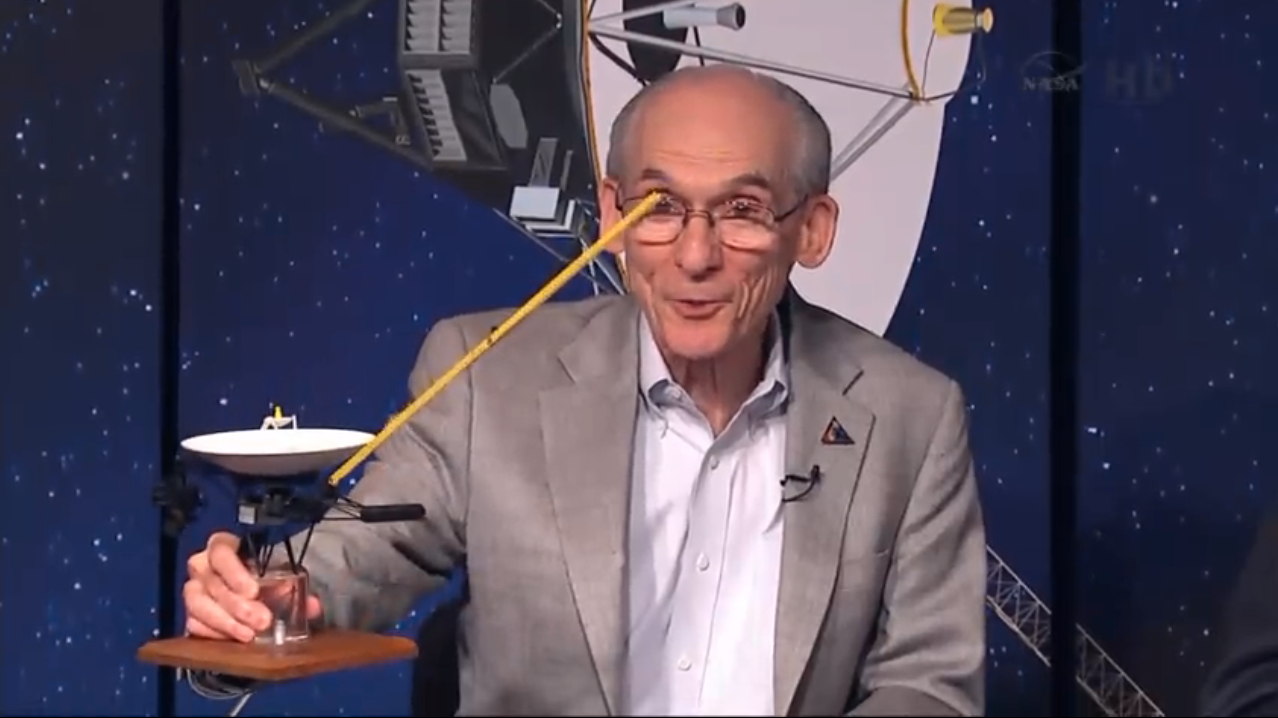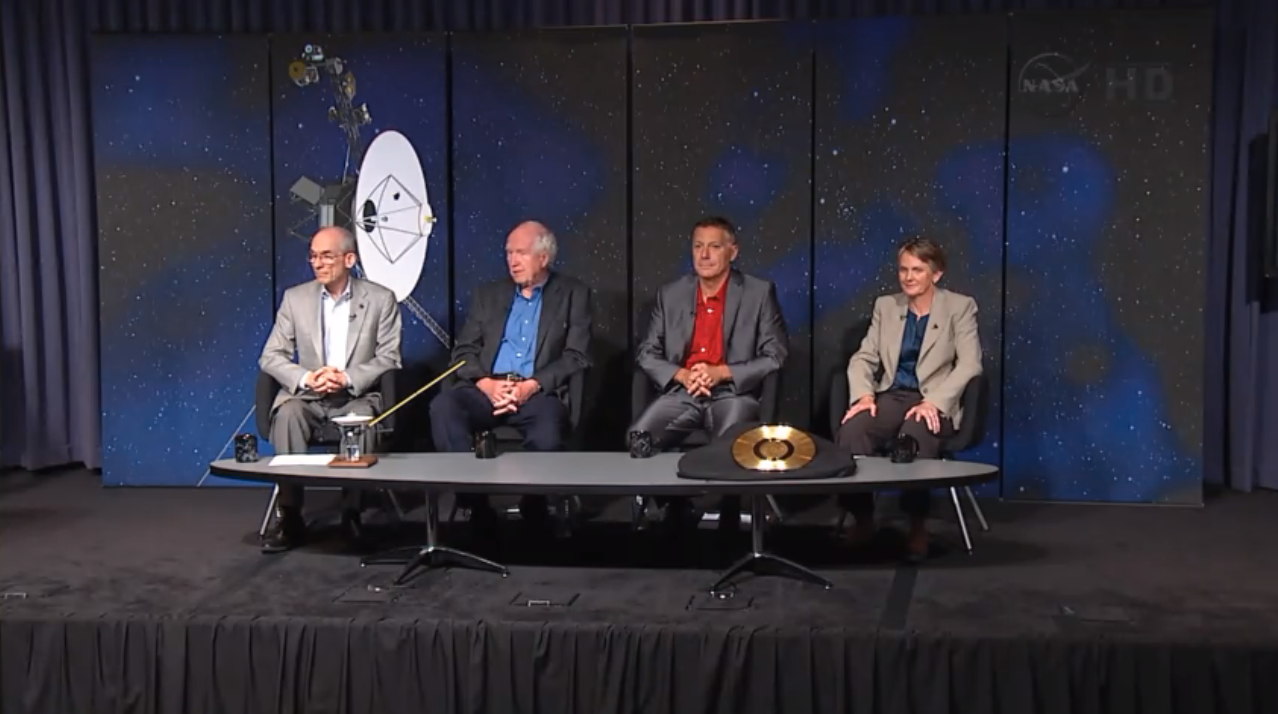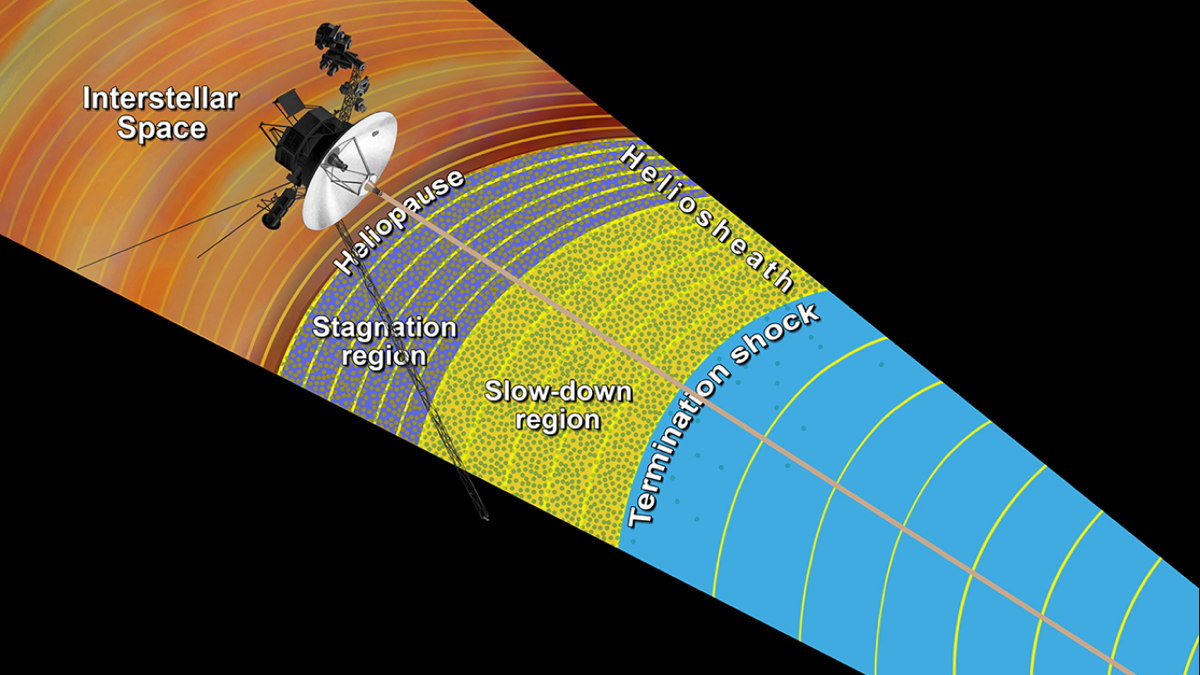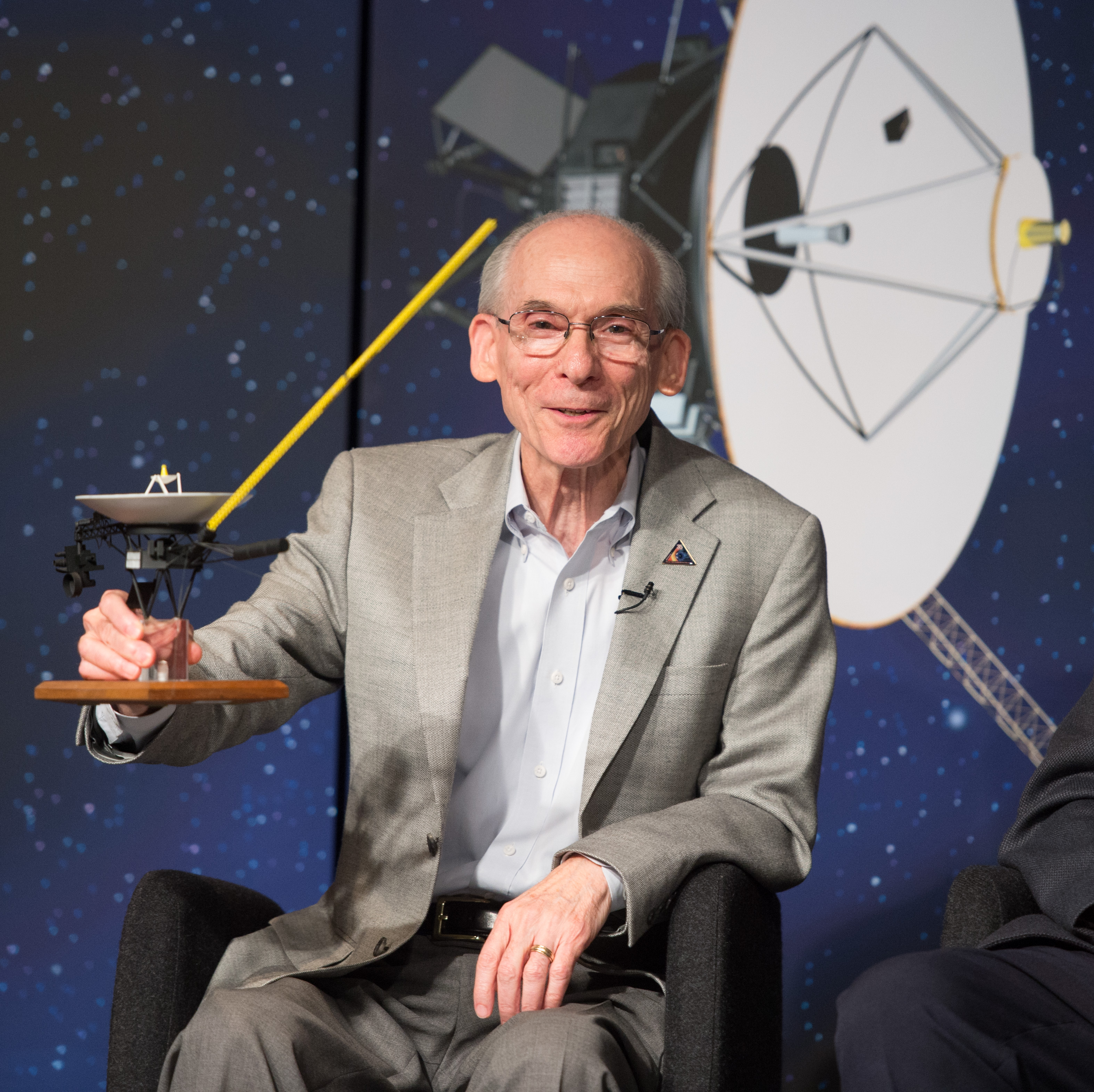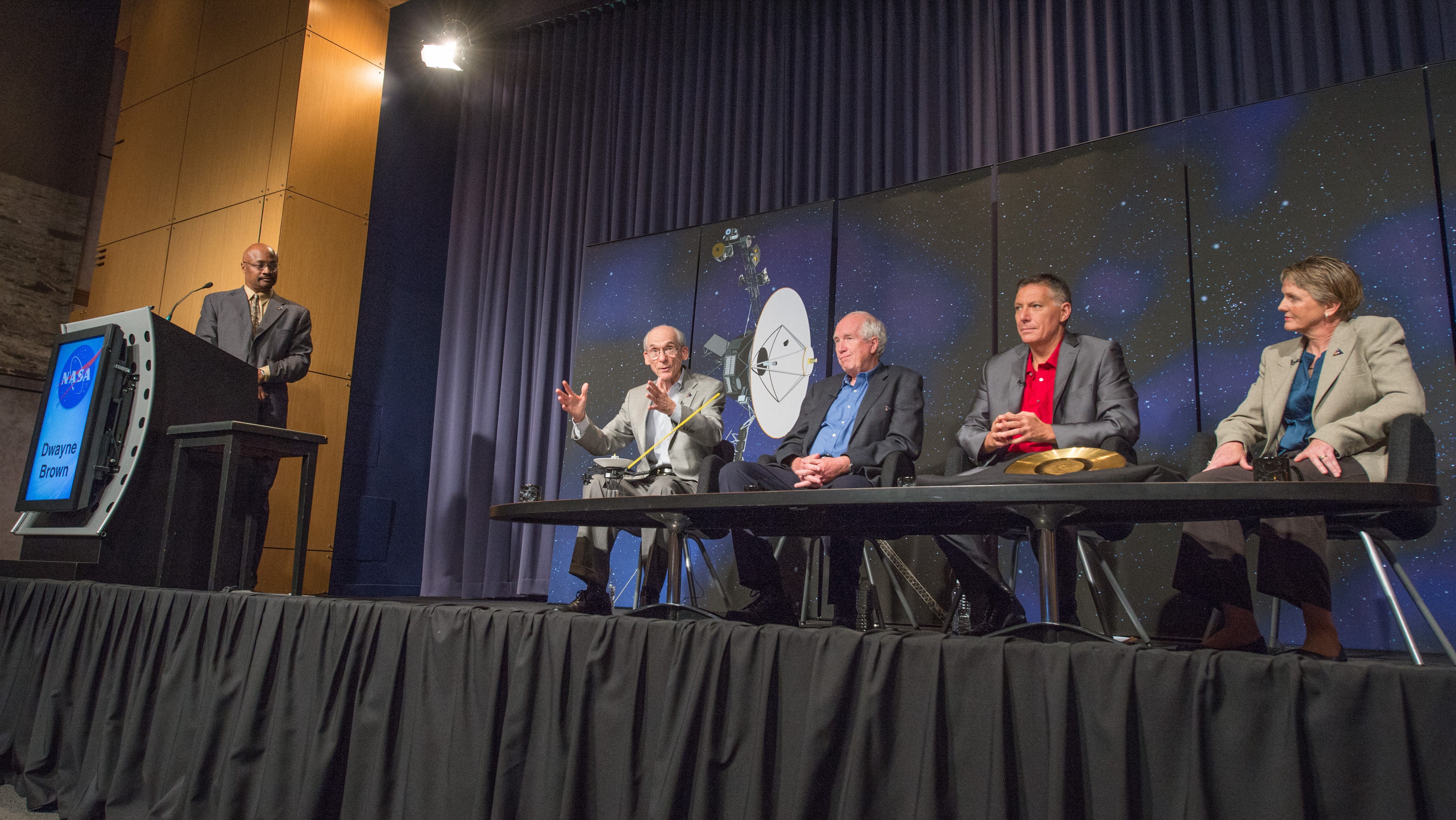Voyager 1 Spacecraft's Road to Interstellar Space: A Photo Timeline
Sept. 12, 2013: NASA Officially Announces Voyager 1's Triumph
John M. Grunsfeld, Associate Administrator for the Science Mission Directorate, introduces the Voyager press conference. NASA held a news conference Sept. 12, 2013, at 11 a.m. PDT (2 p.m. EDT), to discuss NASA's Voyager mission. The news conference was held in Washington, DC, at NASA Headquarters. [See SPACE.com's Compete Coverage: Voyager 1 In Interstellar Space]
Sept. 12, 2013: NASA Officially Announces Voyager 1's Triumph
Ed Stone holds a Voyager spacecraft model. NASA held a news conference Sept. 12, 2013, at 11 a.m. PDT (2 p.m. EDT), to discuss NASA's Voyager mission. The news conference was held in Washington, DC, at NASA Headquarters. [See SPACE.com's Compete Coverage: Voyager 1 In Interstellar Space]
NASA Press Conference Regarding Voyager 1
NASA held a news conference Sept. 12, 2013, at 11 a.m. PDT (2 p.m. EDT), to discuss NASA's Voyager mission. The news conference was held in Washington, DC, at NASA Headquarters. [See SPACE.com's Compete Coverage: Voyager 1 In Interstellar Space]
Solar System in Perspective
This artist's concept puts solar system distances in perspective. The scale bar is in astronomical units, with each set distance beyond 1 AU representing 10 times the previous distance. One AU is the distance from the sun to the Earth, which is about 93 million miles or 150 million kilometers. Neptune, the most distant planet from the sun, is about 30 AU. NASA's Voyager 1, humankind's most distant spacecraft, is around 125 AU. Scientists believe it entered interstellar space, or the space between stars, on Aug. 25, 2012. Image released Sept. 12, 2013.
Moving into Interstellar Space
This artist's concept shows the outer layers of our solar bubble, or heliosphere, and nearby interstellar space. NASA's Voyager 1 is currently exploring a region of interstellar space, which is the space between stars that still feels charged particle and magnetic field influences from the heliosphere. The magnetic field lines (yellow arcs) appear to lie in the same general direction as the magnetic field lines emanating from our sun. Image released Sept. 12, 2013.
Sept. 12, 2013: Dwayne Brown Kicks Off Voyager 1 News Conference
Dwayne Brown, Senior Public Affairs Officer, NASA Science Mission Directorate at NASA Headquarters, kicks off a news conference on NASA's Voyager 1 spacecraft, Thursday, Sept. 12, 2013 in Washington.
Sept. 12, 2013: John Grunsfeld Speaks at Voyager 1 Conference
John Grunsfeld, NASA Associate Administrator for Science in Washington, speaks at a news conference on NASA's Voyager 1 spacecraft, Thursday, Sept. 12, 2013 in Washington.
Breaking space news, the latest updates on rocket launches, skywatching events and more!
Sept. 12, 2013: Ed Stone Holds Model of Spacecraft at Voyager 1 Conference
Ed Stone, Voyager project scientist, California Institute of Technology, holds a model of NASA's Voyager spacecraft at a news conference, Thursday, Sept. 12, 2013 at NASA Headquarters in Washington.
Sept. 12, 2013: Voyager Project Scientist Speaks at Press Conference
Ed Stone, Voyager project scientist, California Institute of Technology, is seen as he speaks at a news conference on NASA's Voyager 1 spacecraft, Thursday, Sept. 12, 2013 at NASA Headquarters in Washington.
Voyager Project Scientist Ed Stone Speaks at Conference
Ed Stone, Voyager project scientist, California Institute of Technology, is seen as he speaks at a news conference on NASA's Voyager 1 spacecraft, Thursday, Sept. 12, 2013 at NASA Headquarters in Washington.

Tariq is the award-winning Editor-in-Chief of Space.com and joined the team in 2001. He covers human spaceflight, as well as skywatching and entertainment. He became Space.com's Editor-in-Chief in 2019. Before joining Space.com, Tariq was a staff reporter for The Los Angeles Times covering education and city beats in La Habra, Fullerton and Huntington Beach. He's a recipient of the 2022 Harry Kolcum Award for excellence in space reporting and the 2025 Space Pioneer Award from the National Space Society. He is an Eagle Scout and Space Camp alum with journalism degrees from the USC and NYU. You can find Tariq at Space.com and as the co-host to the This Week In Space podcast on the TWiT network. To see his latest project, you can follow Tariq on Twitter @tariqjmalik.

